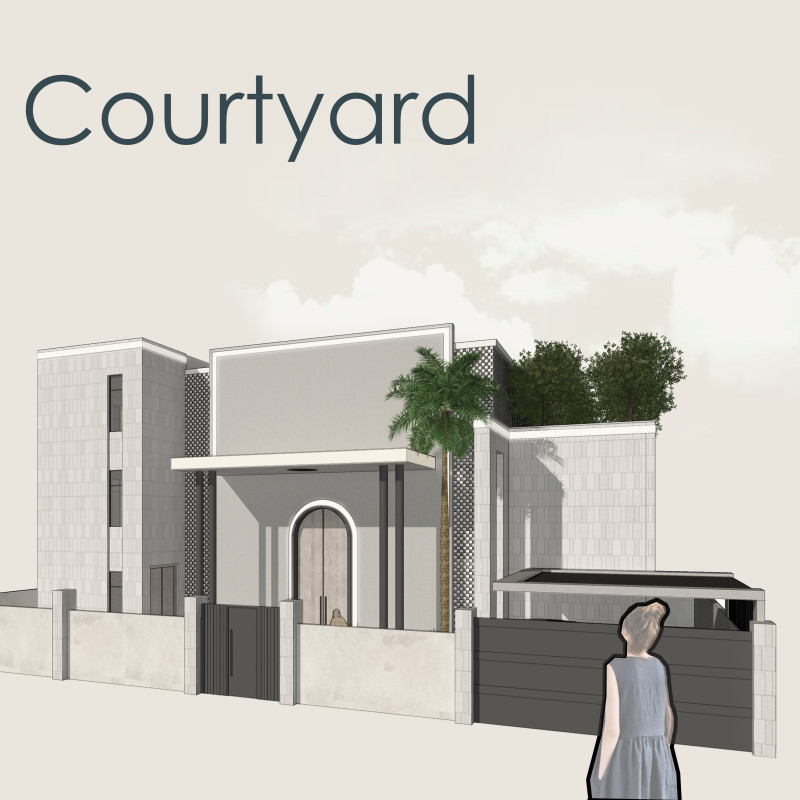5 key facts about this project
The architecture of this project is defined by its harmonious proportions and coherent materials. The facade, composed of a mixture of concrete, glass, and wood, creates a warm yet contemporary appearance that resonates with the local context. The use of concrete underlines the project’s structural integrity, setting a robust foundation that is both functional and visually authoritative. Meanwhile, expansive glass elements allow for ample natural light, establishing a connection between the interior and the exterior spaces. This transparency is symbolic, inviting the outside world in and emphasizing the project's role as a community focal point. Wood is leveraged throughout the design, softening the hard edges of the concrete and glass, while enhancing the overall warmth and inviting atmosphere of the environment.
Functionally, the architecture is designed to serve multiple purposes, facilitating a blend of private and public usage. Spaces are thoughtfully organized to encourage flow and accessibility, creating an intuitive experience for users. The architectural idea behind this layout considers both communal gathering areas and private retreats, accommodating various activities and interactions ranging from meetings to social events. Notably, [describe any specific area within the project, such as open-air atriums, event spaces, or collaborative workspaces] is particularly well-crafted, serving not only a functional need but also acting as a central hub for community engagement.
In exploring unique design approaches, one cannot overlook the project’s sustainable initiatives. The integration of green technologies reflects a pervasive commitment to environmental responsibility. Features such as passive solar design and rainwater harvesting systems underscore a conscientious approach to resource management. This not only reduces the ecological footprint of the building but also promotes a culture of sustainability within the community it serves. The landscaping is another key aspect where the architecture and nature interlace beautifully, with planted areas designed to flourish without excessive maintenance, echoing the ethos of lasting environmental harmony.
Attention to detail is evident throughout the project, from the careful selection of materials to the meticulous crafting of spatial experiences. Architectural sections reveal strategic approaches to ventilation and natural lighting, ensuring spaces remain comfortable and functional year-round. Consideration has been given to acoustics, enabling a spectrum of activities to unfold with ease and comfort. Each architectural design element contributes to the collective experience, fostering an environment where users can thrive, collaborate, and engage meaningfully.
As you engage with this architectural project, we encourage you to explore the nuances of the architectural plans and sections provided. They unveil further insights into the thought processes and architectural ideas that underpin this design, illustrating how the interaction between space, form, and function materializes in everyday experiences. Discovering these elements invites a deeper appreciation of the art and science of architecture that shapes our environments and lives.


























